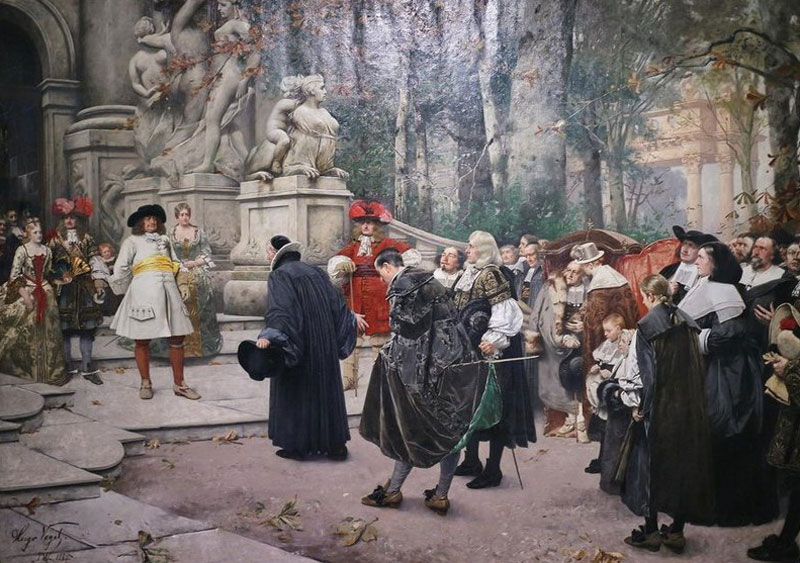Since the Reformation, international congregations have been part of German church history. From the 16th to 18th century, refugees, who had been persecuted because of their faith, founded international protestant congregations. The first one in the German Empire was founded in 1525 by French protestant refugees in Strasburg, which was then German1. From 1538 – 1541, their most famous head of congregation was John Calvin.
Around 1700, there were about 200 congregations who spoke French. They had been founded by Walloons, Huguenots and Waldensians. In addition, refugees from Holland, England, Spain, Bohemia and Austria also founded congregations.

Friedrich Wilhelm, Elector of Brandenburg, welcomes the first Huguenot refugees in Potsdam in 1686. Painted by Hugo Vogel, 1885
In the 19th century, expatriate aristocrats, diplomats, merchants and industrialists founded Protestant, Anglican, Roman Catholic or Orthodox congregations. After the First World War, many Russians and Armenians fled to Germany and founded their own congregations. After the Second World War, displaced persons and other East Europeans found a spiritual home in newly-established congregations.
As over 14 million foreign workers came to Germany between 1955 and 1973, the Roman Catholic Church established mother-tongue congregations for Italians, Spaniards, Portuguese and Croats and later also for Poles and other language groups (currently around 460 congregations). Greeks and Serbs established Orthodox congregations. Today, there are about 450 Orthodox and Oriental Orthodox congregations. In the 1970’s, Protestant immigrants established about 50 congregations and several hundred in the 1990’s.
The majority of the 2.000 to 3.000 protestant international congregations have been established in the last 30 years. Most of them were founded by church leaders from Africa (especially from Central and West Africa, such as Ghana) and from Asia (especially from Korea, many also from China, Vietnam and Indonesia and later from Iran and Arab countries). Other congregations have their roots in Europe, North and Latin America. Some congregations have become so international that they cannot be traced to any region of origin.
Some congregations want to provide a spiritual home for their own community. Others consider themselves to be missionaries to Germans, to re-awaken their former faith (“reverse missionaries) or to their own people, to invite them to accept Christian faith. Many of them are from the Pentecostal-charismatic movement counting 200 to 600 million believers worldwide and growing rapidly.
More about the history of the international congregations can be found in the article of Bianca Dümling: Migration verändert die kirchliche Landschaft in Deutschland. Entwicklung und Geschichte der Migrationskirchen (Migration changes the church situation in Germany. The developement and history of migrant churches) in Rammelt, Claudia / Hornig, Esther / Octavian Mihoc, Vasilie (Editors): Begegnung in der Globalität. Christliche Migrationskirchen in Deutschland im Wandel (Meeting in a global context. Christian Migrant Churches in Germany in Transformation). Leipzig: Evangelische Verlagsanstalt, Pages 77 - 90
1 Eberhard Gresch: Die Hugenotten. Geschichte, Glaube und Wirkung (The Hugenots. History, faith and impact). Leipzig, 5th Edition 2015, pages 84 and 129

